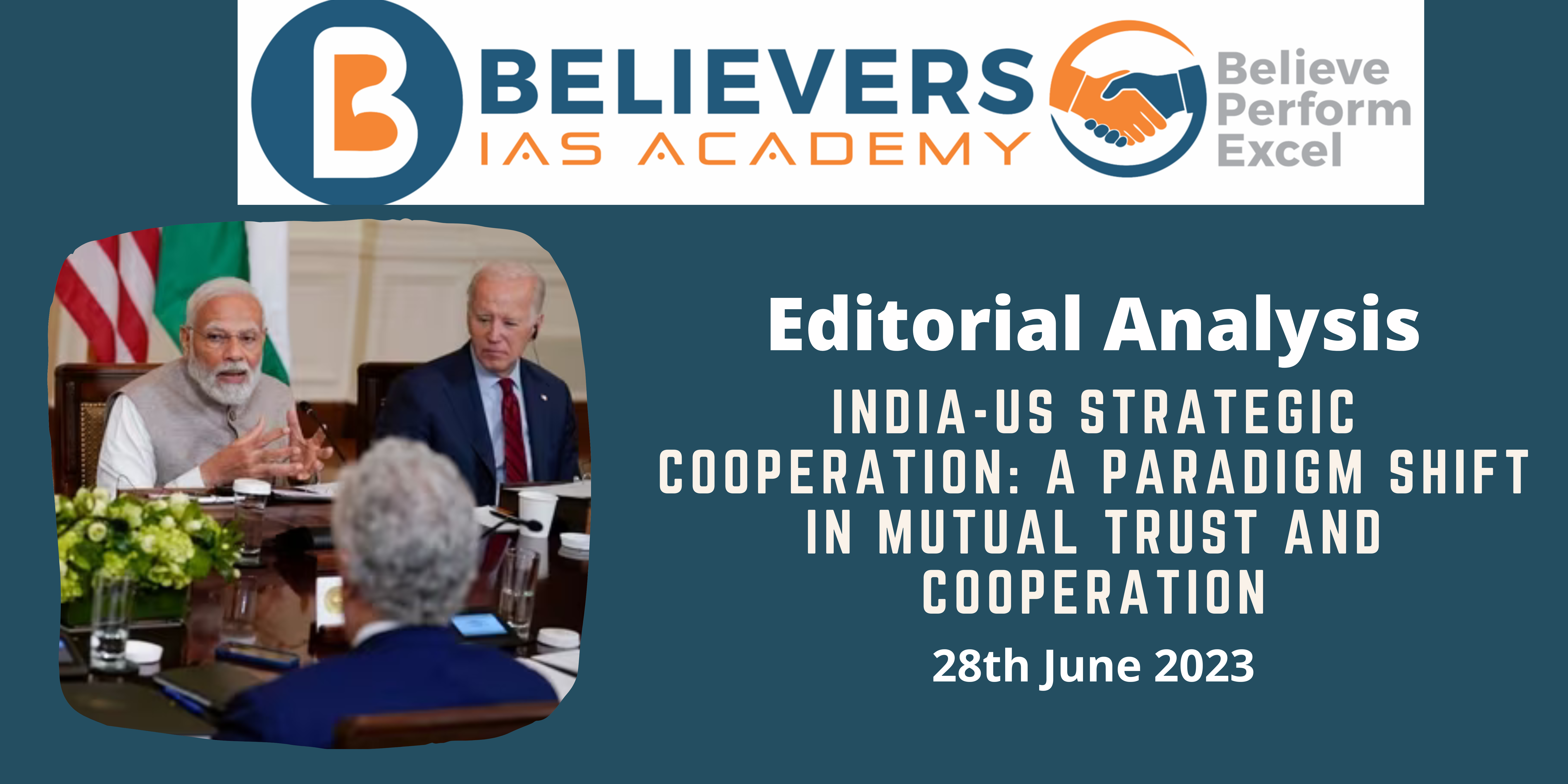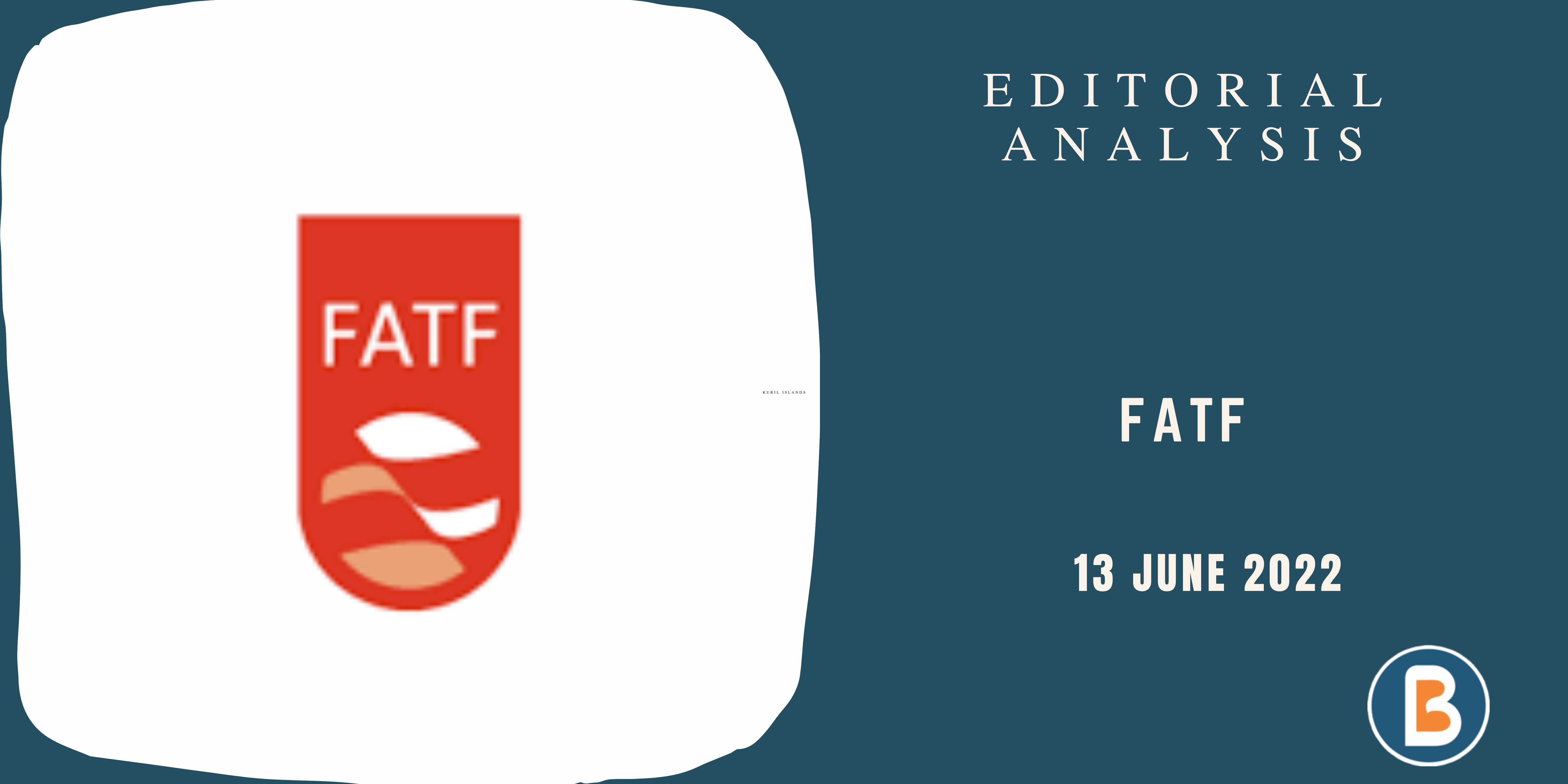India-US Strategic Cooperation: A Paradigm Shift in Mutual Trust and Cooperation
Context:
The recent state visit of Prime Minister Narendra Modi to the United States marks a significant milestone in the burgeoning strategic cooperation between India and the US. While the two nations have not yet become treaty allies, this visit signals a concerted effort to elevate their partnership to unprecedented heights.
Relevance:
GS-02 (Bilateral Relations)
Prelims:
- Emerging Technologies in Defence and Aerospace
- Defense Ties and Military Cooperation between India and US
Mains Questions:
- Assess the potential of joint initiatives in jet engine production, semiconductors, and space technology in bolstering India’s defense industry and technological competence. (150 words)
Dimensions of the Article:
- Strengthening Defense Ties
- Indo-Pacific Concerns and Long-term Defense Partnerships
- India’s Path to Technological Competence
Strengthening Defense Ties:
- India and the US have witnessed a deepening military cooperation in recent years. The US has supplied a range of advanced defense equipment to India, including C-130 and C-17 Globemaster transport aircraft, AH-64E Apache attack helicopters, CH-47 Chinook and MH-60R multi-role helicopters, P-8I maritime patrol aircraft, and M777 ultra-light howitzers.
- Concurrently, the US has been actively promoting its fighter jets, the F-16 and F/A-18, for potential acquisition by the Indian Air Force and the Indian Navy. It is worth noting that previous engine development efforts under the Defense Technology and Trade Initiative were unsuccessful. However, the current jet engine deal signifies a renewed investment by both nations to address shared security concerns while navigating disagreements.
Indo-Pacific Concerns and Long-term Defense Partnerships:
- A primary area of shared concern between India and the US is the expanding influence of China in the Indo-Pacific region. The US also aims to gradually reduce India’s defense partnership with Russia in the long term.
- Technologically, the recently announced joint initiatives in jet engine production, semiconductors, and space technology present a unique opportunity for India to develop its indigenous defense industry and enhance its technological prowess across various domains.
- While the strategic embrace with the US strengthens and becomes more comprehensive, India remains committed to maintaining its strategic autonomy.
- India is cautious about becoming entangled in the power rivalries of other nations, and it is encouraging that the US recognizes and acknowledges this concern. The convergence of interests in protecting borders and sovereignty establishes a new era of mutual trust between the two countries, acting as a stabilizing force in the region.
India’s Path to Technological Competence:
- The collaborative efforts in jet engine production, semiconductor manufacturing, and space technology not only bolster India’s defense capabilities but also provide avenues for technological advancements.
- Developing a robust defense industry allows India to reduce dependency on foreign imports and foster self-sufficiency.
- Although transfer of technology and knowledge sharing catalyzes India’s competence in the Global spectrum, it shall also have a cascading effect on sectors like aerospace, defense manufacturing, and space exploration.
Way forward:
- To capitalize on the current momentum, India and the US should further enhance their defense cooperation through joint research and development initiatives.
- Strengthening collaboration in emerging technologies, such as artificial intelligence, cyber defense, and quantum computing, can provide the impetus for both nations to remain at the forefront of innovation and ensure strategic advantage.
- Promoting people-to-people exchanges, academic collaborations, and defense industry partnerships will foster deeper ties and foster a comprehensive understanding of each other’s strategic priorities.




